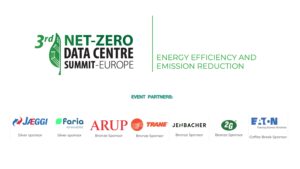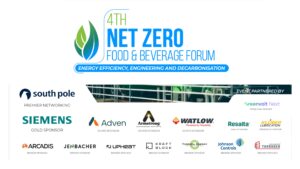The economy today is globalized and products traverse complex international networks. So, this has made the evolution of packaging technology central to supply chain optimization and sustainability. Furthermore, these innovative packaging solutions stand out as key players in the fight against waste and spoilage. They are changing how we preserve and protect goods from farm to factory, warehouse to consumer. This article explores some cutting-edge innovations in packaging to extend shelf life in the supply chain.
Active Packaging Technologies To Extend Shelf Life In The Supply Chain
The active packaging technologies go beyond the traditional barrier functions to improve the preservation of the product. So, let us see some of these ahead aiding in extended shelf life in the supply chain:
Oxygen Scavengers
Oxygen scavengers refer to the materials that go into packaging that remove oxygen from the internal environment actively. Furthermore, this technology of shelf life packaging works wonders for products sensitive to oxidation. It includes coffee, processed meats, and nuts. So, by getting rid of oxygen, it slows down the process of oxidation. This prevents rancidity and maintains freshness for an extended period. Additionally, it allows the products to maintain their quality or flavor profile for much longer leading to more consumer satisfaction.
Moisture Control Systems
These systems in packaging aid in maintaining optimal levels of humidity for products. Furthermore, moisture control systems can absorb the excess moisture or release it as needed. For example, in the case of perishable packaging materials, moisture control will prevent condensation which triggers the growth of molds. When it comes to dry goods, however, they are exceptional in attracting any moisture that may enter and cause lumps or spoilage when stored. Thus, this technology is important for maintaining texture, look as well as quality.
Antimicrobial Packaging
The materials used in antimicrobial packaging have substances that suppress bacteria, mold, or other microorganisms. Natural compounds like essential oils or synthetic microbial agents help to achieve this through the packaging process. Furthermore, these compounds are released into the surrounding environment inside the packaging over time. So, it creates a harsh environment for microbes. Moreover, this technology holds significance, particularly for fresh meats, fruits, and vegetables. It reduces the risk of foodborne illnesses and maintains product freshness for a long period.
Extended Shelf Life In The Supply Chain: Intelligent Packaging Solutions
Intelligent supply chain Packaging uses technology to watch and inform about product conditions all along the supply chain. So, let us see some of these solutions ahead:
Time-Temperature Indicators
Time-temperature indicators are smart labels that can visually show the cumulative time and temperature history of a product. Furthermore, these indicators show different colors or display a message when the product is exposed to unacceptable temperatures. Moreover, this technology stands to be incredible for cold chain management. This is because it ensures that temperature-sensitive products like vaccines, seafood, etc. maintain their quality. Additionally, it provides confidence and transparency to both retailers and consumers.
Freshness Indicators
Freshness indicators are made to detect and display the actual freshness state of a product instead of the printed date of expiry. Furthermore, it can measure elements like pH changes, composition of gas, or even microbial growth inside the packaging. For eg – the indicator on meat packaging changes color when the meat begins to spoil. Moreover, this technology aids in eliminating any food wastage by giving accurate information. It also helps the consumers to make informed decisions.
RFID and NFC Technologies
RFID and NFC technologies now find integration into the packaging to give the capability of real-time tracking & monitoring. Furthermore, these can record and transmit the data about location of a product, temperature, humidity, and also other environment-related factors. So, this level of monitoring helps in proactive quality management which leads to companies identifying and addressing any issues before product spoilage. Additionally, these technologies can improve the management of inventory and give valuable data for supply chain optimization or extended shelf life in the supply chain.
Evolution In Packaging: Advanced Barrier Materials
The evolution of packaging is aiding in creating additional barriers between the product and the environment avoiding spoilage. So, let us see some of the sustainable packaging innovations for supply chain efficiency:
High-Barrier Films
These films are extremely advanced and are made in a way to gives superior protection against moisture, penetration of light, and even oxygen. Furthermore, these films make use of several layers of different polymers. Each of these serves a particular protective function. For eg – the ethylene vinyl alcohol layers of the film give excellent oxygen barrier properties. Moreover, these high-barrier films are extremely useful for extending the shelf life of sensitive products. It includes pharmaceutical products, snacks, or ready-to-eat meals. As a result, it ensures freshness without the need for additives and a longer shelf life in the supply chain.
Nanocomposite Materials
Nanocomposite materials show cutting-edge development in the technology for packaging. These materials have nanoparticles in their packaging structure. This enhances barrier properties and also mechanical strength. For eg – nanocomposites using clay particles can majorly improve the plastics’ oxygen and properties of moisture barrier. Moreover, it allows for thinner and lighter packaging leading to less material use and more shelf life in the supply chain. These nanocomposites are being explored for multiple applications right from food packaging to electronics protection.
Biobased and Biodegradable Materials
The sustainability concerns are growing and the focus on making biobased and biodegradable packaging materials are increasing. Furthermore, these materials that come from renewable sources like cornstarch or cellulose are made to offer good barrier properties while being environmentally friendly. For eg – polylactic acid films can give similar barrier properties as traditional plastics for many applications. Though challenges remain in achieving the same performance as conventional methods, the ongoing research is improving its capabilities for better shelf life in the supply chain.
To Sum Up
The evolution of packaging to extend shelf life in the supply chain is a crucial development for optimization and waste reduction. In addition, the innovations enable firms to decrease expenses, increase eco-sustainability, and satisfy customers’ requirements for fresher and higher-quality products. Additionally, we should expect more sophisticated packaging solutions resulting from progressive developments in this area that can change supply chain efficiency.
If you want to stay at the forefront of these innovations and more for supply chain sustainability, you must attend the Net-Zero Supply Chain Summit held in Amsterdam, Netherlands on September 12-13, 2024. It is an event with sessions, discussion panels, case studies, and more to cover topics like product management; warehouse & logistics; green transportation, etc. So why wait? Sign up now!



